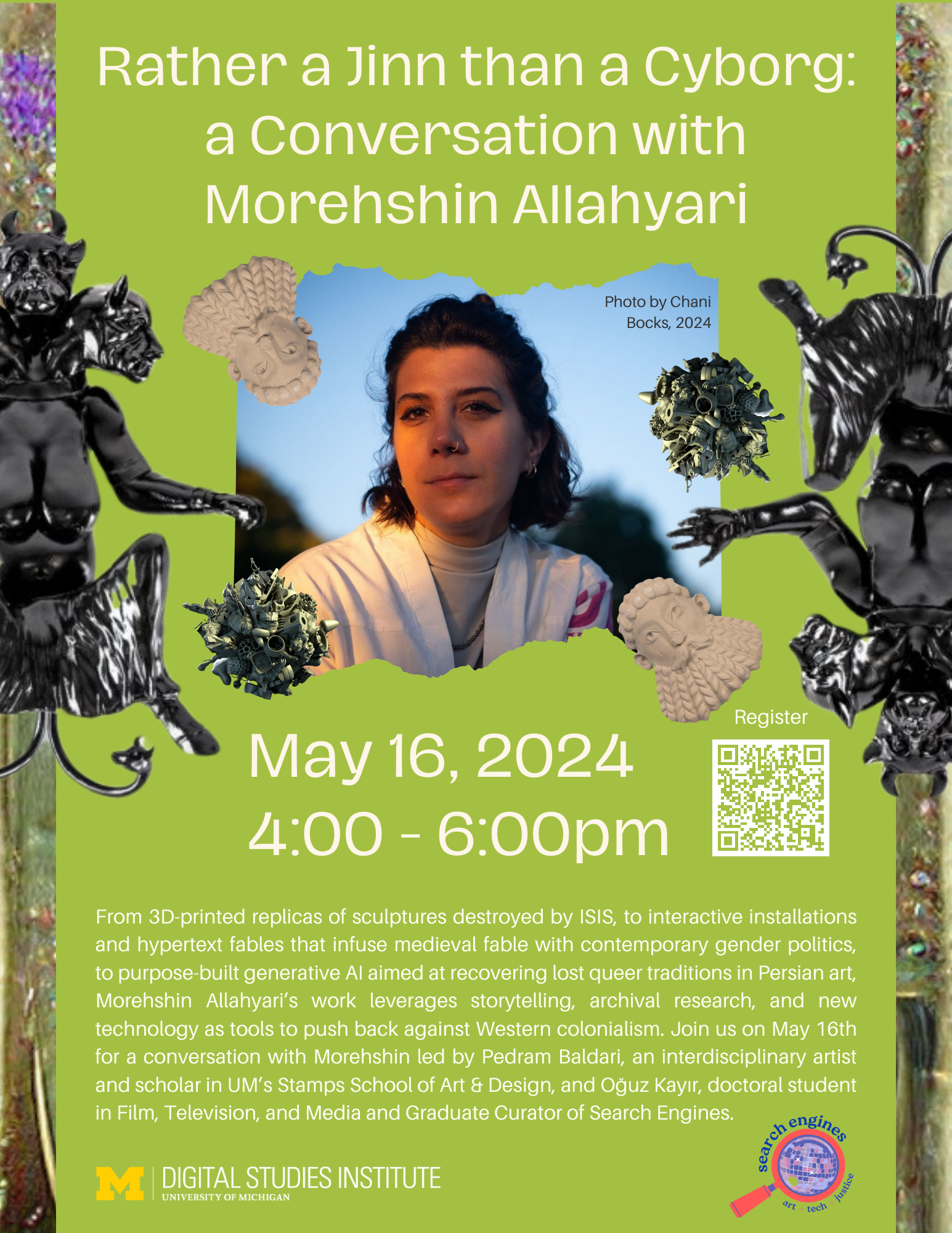Event Description
From 3D-printed replicas of sculptures destroyed by ISIS, to interactive installations and hypertext fables that infuse medieval fable with contemporary gender politics, to purpose-built generative AI aimed at recovering lost queer traditions in Persian art, Morehshin Allahyari’s work leverages storytelling, archival research, and new technology as tools to push back against Western colonialism. Join us on May 16th for a conversation with Morehshin led by Pedram Baldari, an interdisciplinary artist and scholar in UM’s Stamps School of Art & Design, and Oğuz Kayır, doctoral student in Film, Television, and Media and Graduate Curator of Search Engines.
Bio
Morehshin Allahyari (Persian: موره شین اللهیاری), is a NY based Iranian-Kurdish artist using 3D simulation, video, sculpture, and digital fabrication as tools to re-figure myth and history. Through archival practices and storytelling, her work weaves together complex counternarratives in opposition to the lasting influence of Western technological colonialism in the context of SWANA (Southwest Asia and Nort Africa). Her work has been part of numerous exhibitions, festivals, and workshops at venues throughout the world, including the New Museum, MoMa, Centre Pompidou, Venice Biennale di Archittectura, and Museum für Angewandte Kunst among many others. She is the recipient of The United States Artist Fellowship (2021), The Joan Mitchell Foundation Painters & Sculptors Grant (2019), The Sundance Institute New Frontier International Fellowship (2019), and the Leading Global Thinkers of 2016 award by Foreign Policy magazine. Her artworks are in the collection of the Whitney Museum of American Art, San Francisco Museum of Modern Art, and the Current Museum. She has been featured in The New York Times, BBC, Huffington Post, Wired, National Public Radio, Parkett Art Magazine, Frieze, Rhizome, Hyperallergic, and Al Jazeera, among others.

